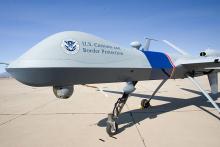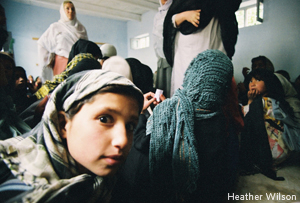Taliban

In the nearly 20 years I have been a working journalist, occasionally I have been tempted to intervene in the stories I have been assigned to cover. Most of the time, I have not, and that was probably the right choice. But once upon a time, about four years ago, I crossed the line. In a big way. I intervened because the life of another person was at stake and I knew that my calling was to be human, to react, to help, to do whatever I could to save a life. It's the best decision I've ever made. Hands down.
As I read a remarkable story in the Toronto Star newspaper, I wondered if the paper's veteran foreign correspondent, Paul Watson, now feels the same way.
Earlier this month, Watson, who is Canada's only Pulitzer Prize-winner, arrived in Toronto from Kandahar, Afghanistan with a very special package: a 17-year-old Afghan girl forced to flee her homeland, in the reporter's care, to escape certain death at the hands of Taliban assassins.

Since mid-November, the CIA had not launched a drone attack against Pakistan. On Sunday, the New York Times front page prominently featured a story headlined Lull in Strikes by U.S. Drones Aids Militants.
Quoting an array of administration officials, diplomats, intelligence analysts, and one “American government official with decades of experience in Pakistan;” the picture painted was one of a bolder al Qaeda, increased attacks on Pakistani security, and threatened strikes against U.S. troops in Afghanistan. It was a “sky is falling” account of the dire effects of no drones.
In my more cynical moments, I think such stories, almost entirely from anonymous sources, are a not-so-subtle way of applying political pressure. It’s one of the ways media and politics interact in Washington. And, sure enough, yesterday, the attacks resumed. Reuters reported that “missiles hit a home on the outskirts of the town of Miranshah in North Waziristan, killing at least four militants.” Recess is over, back to business.

During interviews with more than a dozen Afghan women leaders, researchers, international aid workers and former Afghan government officials, we learned of persistent dangers and threats to the country's future.
Afghan women face continuing repression. They are witnessing the erosion of previous gains as Taliban control spreads in the countryside and reactionary warlord influence increases within the Kabul regime. The government's own security forces are often responsible for violations of women's rights. Check back in a few days for a more detailed account of what we learned.
The withdrawal of foreign forces will produce an economic crisis for the government of Afghanistan, which remains almost completely dependent financially on the U.S. and other foreign governments, especially to pay for its huge 300,000-person security forces. I wrote about this funding failure in an earlier post.
A new security agreement between Kabul and Washington is likely to call for the continued presence of U.S. military forces in the country beyond the 2014 transition deadline. This is seen as necessary to provide security for Kabul, but it could also have the effect of prolonging the insurgency and impeding prospects for reconciliation.
It was clear from what we heard that maintaining security requires more than deploying a large number of troops.
I hate war. I do not hate it because people die. Death is inescapable. And believers believe that we will meet those we love again in heaven. I hate war with a perfect hatred because it causes suffering and robs the world of incalculable human possibilities. It pains the earth. It creates waste and the misallocation of resources.
Saturday, August 6, 30 Americans and eight Afghans were killed when Taliban insurgents shot down a Chinook transport helicopter. The New York Times called it: "the deadliest day for American forces in the nearly decade-long war in Afghanistan."
Bamiyan is a central Afghan town, home to two monumental Buddha statues carved out of sandstone cliffs. In a zealous attempt to purge anything considered un-Islamic, the Taliban targeted these historic statues a decade ago when they occupied and controlled Afghanistan. The defamation of non-Islamic monuments and sites caused a global response. The efforts of national leaders failed, and the Taliban destroyed the statues in March, 2001. The world community -- from Russia to Malaysia, from Germany to Sri Lanka -- expressed horror at the Buddha's demolition.
Sitting over the Bamiyan Valley since the early sixth century, one of the Buddha figures stood nearly 180 feet tall and the other 120 feet. Before their destruction, these statues were the largest Buddha carvings in the world. They were once a major tourist attraction, but the decades of conflict drove away tourists years before the Taliban blew up the statues.
What is wrong with the typical photo of world leaders making decisions for their countries? The general absence of women -- at the table, in the room, and, as a result, from the agenda.
In November, 2010, Marine 2nd Lt. Robert M. Kelly was killed by a landmine in Afghanistan. He became one of now nearly 1,500 young Americans to die there.